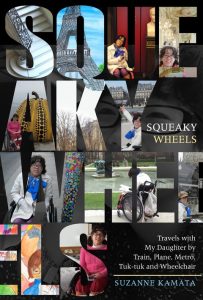WIT Life #341: Hanami at home
Interpreter/Translator/Writer Stacy Smith (Kumamoto-ken CIR, 2000-03) presents WIT Life, a periodic series about aspects of Japanese culture such as film, food and language. Stacy starts her day by watching Fujisankei’s newscast in Japanese, and here she offers some interesting tidbits and trends along with her own observations.
Hope everyone is holding up ok as we enter our second month of sheltering at home. Some days are better than others, but one thing I’m really missing is soaking up spring. This would typically be the season when I’d be attending all of the 桜祭り (sakura matsuri or cherry blossom festivals) in various parts of Queens, but of course that can’t happen this year.

Thankfully the Sato Sakura Gallery has a virtual fix for people who are craving the cherry blossoms. Check out this related article, which discusses 花見 (hanami or flower viewing) culture, as well as the museum’s amazing collection of sakura screens and paintings. For those who want a literal taste of sakura, try the cherry blossom shake at Shake Shack or pick up some sakura mochi at your local Japanese supermarket.
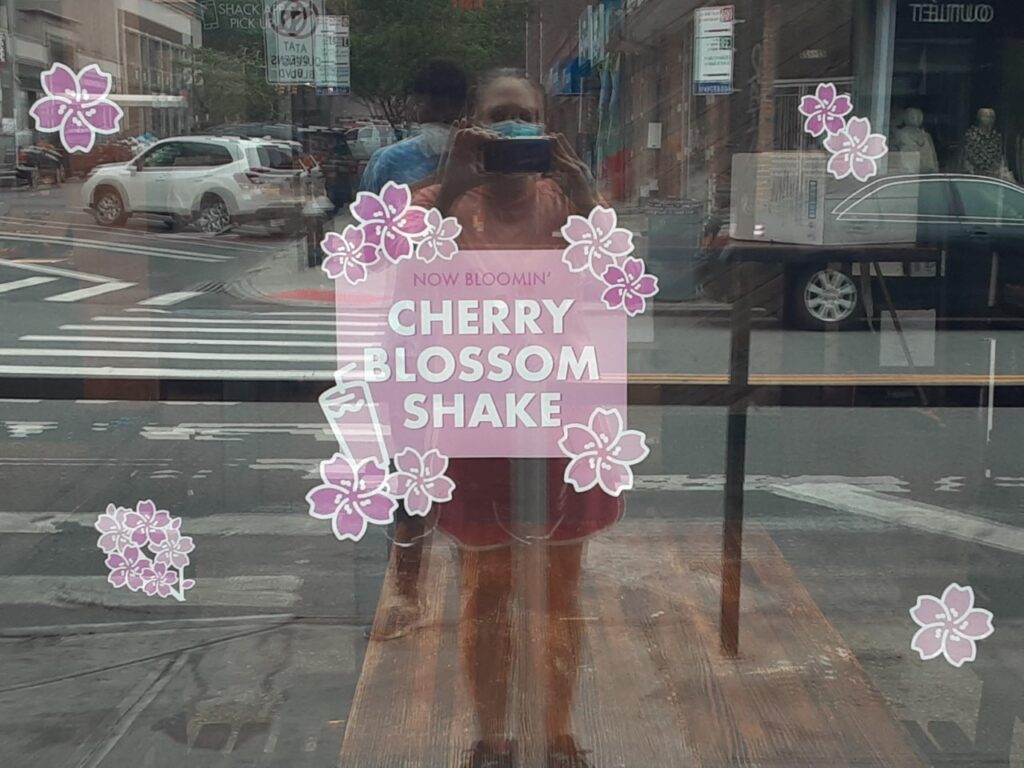
Hope this tides you over until next year, when we can hopefully enjoy the blossoms by sitting under them with food, drink and friends!
JET alum Charles Kowalski to cohost Japan Writers Conference
Posted by Tom Baker
The annual Japan Writers Conference is seeking writers, editors and translators to give presentations at this year’s event, to be held in October in Kanagawa Prefecture. Through the years, many JETs and JET alumni writers, including freelancers, have spoken at or attended this event. This year, former JET Charles Kowalski will be cohosting the conference at his university.
The organizers are aware that the coronavirus has added uncertainty to everyone’s plans this year, but they intend to go ahead with the event if it is safe to do so in the autumn. However, they are also contemplating online options, so it might become possible to attend remotely. Here’s the official announcement:
 Each year, English-language writers from many fields gather at the Japan Writers Conference to share ideas and experiences on the art, craft and business of writing. In 2020, the 14th annual Japan Writer’s conference will be held on Oct. 10-11 at the Shonan campus of Tokai University in Hiratsuka, Kanagawa Prefecture. Award-winning novelist and JET alum Charles Kowalski, a popular speaker at past conferences, will cohost this year’s event with food and travel writer Joan Bailey.
Each year, English-language writers from many fields gather at the Japan Writers Conference to share ideas and experiences on the art, craft and business of writing. In 2020, the 14th annual Japan Writer’s conference will be held on Oct. 10-11 at the Shonan campus of Tokai University in Hiratsuka, Kanagawa Prefecture. Award-winning novelist and JET alum Charles Kowalski, a popular speaker at past conferences, will cohost this year’s event with food and travel writer Joan Bailey.
“The Japan Writers Conference is something special,” said poet John Gribble, a co-organizer of the event. “It is open to all, beginner to pro. It is also an annual collection of rigorous, authoritative lectures, workshops, and discussion groups. Anyone with a concern for the written and published word would benefit from coming.”
The conference is now accepting proposals for presentations. All published writers, as well as translators, editors, agents and publishers, are welcome to submit proposals.
Last year’s JWC presenters included astrophysicst Elizabeth Tasker on writing about science, novelist Evan Fallenberg on writing about sex, and screenwriter Steven Wolfson on structuring plots. Authors Holly Thompson and Mariko Nagai held a workshop on revising young adult fiction.
“This has been a year of isolation for everyone,” Kowalski noted. “But for English-language writers in Japan, that’s familiar territory, and it’s often the most fertile soil for the seeds of inspiration to take root. I hope that, come autumn, we’ll all be able to poke our heads above ground again and share a rich harvest of ideas.”
Writers and others interested in giving presentations, or simply attending the 2020 conference, can find details, including proposal guidelines and a submission form, at http://www.japanwritersconference.org. The deadline for proposals is June 1.
Run entirely by volunteers, the Japan Writers Conference is a free event open to all. Inquiries should be sent to japanwritersconference@gmail.com
Job: Tourism-related writer (Japan) or copyeditor (anywhere)
Posted by Tom Baker
This job listing come from Brendan Craine, a managing editor at Export Japan, a small translation and content production company in Nihonbashi, Tokyo. The job involves the production of expository text for Japan’s various tourist sites under the auspices of the Japan Tourism Agency. Applicants must complete certain trials by April 10. They can receive the trial material by emailing their credentials to writing@export-japan.co.jp with the subject line: “JTA Signage Revision Project 2020 – Inquiry about Freelance Work [first and last name].”
The following is the description provided by Craine, lightly edited:
**********************************
Information about the project (in Japanese) can be found here.
This project has been ongoing since May 2018. Last year alone, we produced over 500 pieces of text for 24 different localities. These texts ranged in topic and medium, from museum panels about national parks to online text about castle ruins, and had our writers traveling to well-known sites in Kyoto and Nikko as well as seldom-traveled islands like Oki and Ogasawara.
The project will continue in this coming year, and we are looking for writers and copyeditors to assist in the text production process.
Position: Writer or Copyeditor
Term: Ongoing between May 2020 and January 2021
Duties: (see trials for in-depth explanation)
Writer: Preliminary research on assigned location, accompanied coverage of local site, production of text and revision in response to editor feedback
Copyeditor: Preliminary research on assigned location, editing of drafted text
Compensation:
Writer: ¥18,000 per 250-word piece of text
Copyeditor: ¥5,000 per 250-word piece of text
(Participants are assigned 15 texts on average)
[Candidates with Japanese language proficiency equivalent to JLPT N2 or better are highly preferred.]
Because writing signage text is markedly different than writing for journalistic or academic publications, the JTA has mandated that writers and copyeditors must be vetted with trials. In order to be considered for either position, you will need to submit its associated trial. (Applications for both positions are also accepted, provided both trials are submitted.) Trials will be accepted until April the 10th.
Although writers residing in Japan are desirable, transportation to/from Japan can be provided for a strong candidate living overseas. Any lodging and transportation costs associated with coverage will be provided. The copyediting work can be performed entirely from overseas.
If you have any clarifying questions/other inquiries, please feel free to respond and ask.
This position is open to any qualified candidate, and referrals are welcome.
In that case, please have your colleagues email their credentials to writing@export-japan.co.jp with the subject line:
“JTA Signage Revision Project 2020 – Inquiry about Freelance Work [first and last name]”
Interpreter/Translator/Writer Stacy Smith (Kumamoto-ken CIR, 2000-03) presents WIT Life, a periodic series about aspects of Japanese culture such as film, food and language. Stacy starts her day by watching Fujisankei’s newscast in Japanese, and here she offers some interesting tidbits and trends along with her own observations.
Recently I had the chance to check out the newest exhibition at the Sato Sakura Gallery, Curious Beasts. As the name indicates, this collection of paintings is of animal portraits ranging from cats and tigers to dogs and birds. The works are from the artists Fumika Koda and Yuji Musashihara, and being a cat lover I was partial to Koda’s paintings as they mostly feature felines. In particular, I liked her painting Beautiful Spring Day (春うらら, haru urara), which shows a cat caught under falling cherry blossoms (花吹雪, hanafubuki).
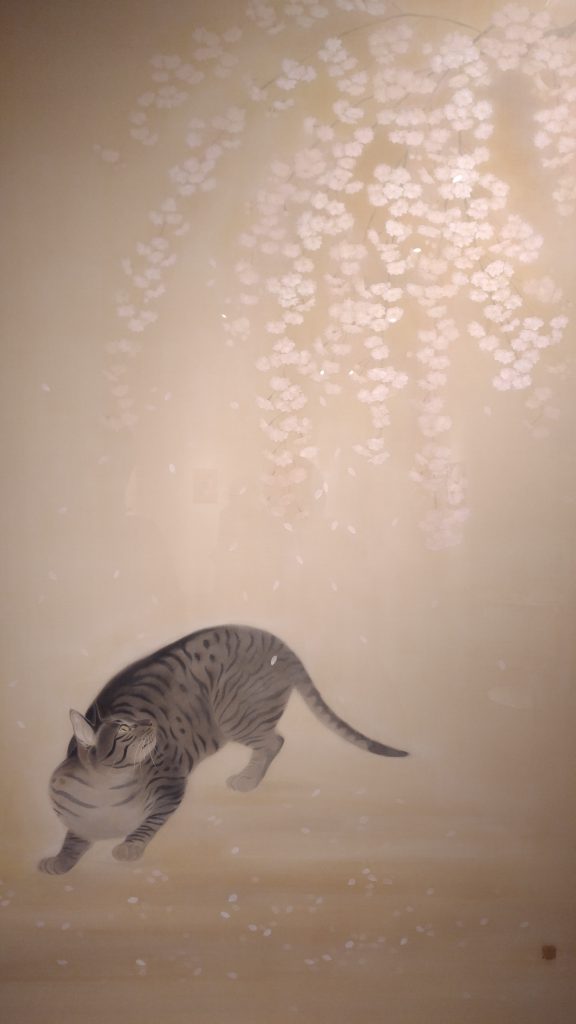
WIT Life #337: Japanese Home Cooking
Interpreter/Translator/Writer Stacy Smith (Kumamoto-ken CIR, 2000-03) presents WIT Life, a periodic series about aspects of Japanese culture such as film, food and language. Stacy starts her day by watching Fujisankei’s newscast in Japanese, and here she offers some interesting tidbits and trends along with her own observations.
It’s been a long time since I’ve written here, and I can’t believe the holiday season is already upon us! If you are like me and are still in the midst of Christmas gift shopping, what better present is there than books? In the last week I’ve visited various bookstores in the city, and was lucky enough to be introduced to the fantastic new cookbook Japanese Home Cooking (Simple Meals, Authentic Flavors) from the cooking teacher, noodle maker, grain activist and author Sonoko Sakai.
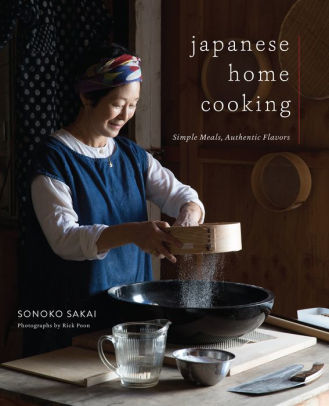
California-based, Queens-born Sakai shares personal stories while showcasing traditional Japanese dishes in this beautifully photographed book. She offers readers advice on how to stock their pantries with the necessary ingredients for creating any Japanese meal, as she views this as the most important aspect of Japanese cuisine (she often takes students on tours of Japanese grocery stores as they can be hard to navigate if you are not familiar with what is being sold). I like how she opens the book by describing freshness, beauty, seasonality, simplicity and economy as the five keys to Japanese cooking. As an introduction she also breaks down the five elements of cooking and eating (i.e. five colors, five senses, five flavors), making these essential aspects easy to remember.
Novelist Charles Kowalski to lead Japan Writers Conference workshop
Posted by Tom Baker
 Novelist and former Aomori Prefecture JET Charles Kowalski, the author of the thrillers “Mind Virus” and “The Devil’s Son,” as well as the new middle-grade novel, “Simon Grey and the March of a Hundred Ghosts,” will present a workshop on giving names to fictional characters at this year’s Japan Writers Conference, happening in Tokyo on Oct. 12-13. Here’s a description of his presentation:
Novelist and former Aomori Prefecture JET Charles Kowalski, the author of the thrillers “Mind Virus” and “The Devil’s Son,” as well as the new middle-grade novel, “Simon Grey and the March of a Hundred Ghosts,” will present a workshop on giving names to fictional characters at this year’s Japan Writers Conference, happening in Tokyo on Oct. 12-13. Here’s a description of his presentation:
What’s In A Name? Tips and traps in character naming
Craft workshop
Remember the journey into Mordor by the heroic Bingo Baggins? (Of course not, and aren’t you glad?) The naming of characters is a difficult matter, but we will discuss the three main considerations (sound, meaning, and associations) and their applications to genres ranging from contemporary fiction to SF and fantasy, along with pitfalls to avoid.
Charles Kowalski’s debut thriller, MIND VIRUS, won the Rocky Mountain Fiction Writers’ Colorado Gold Award, and was a finalist for the Killer Nashville Claymore Award and the Adventure Writers’ Grandmaster Award. His first middle-grade novel, SIMON GREY AND THE MARCH OF A HUNDRED GHOSTS, was just released by Excalibur Books.
For more information, visit charleskowalski.com or japanwritersconference.org.
Michael Frazier to lead Japan Writers Conference poetry workshop
Posted by Tom Baker
Kanazawa JET Michael Frazier is set to lead a poetry workshop at this year’s Japan Writers Conference (Oct. 12-13 in Tokyo). Here’s the official description:
Haibun, Tanka, Pecha Kucha—Contemporary English-Language Poets & Japanese Forms
Craft Workshop
 This workshop focuses on the influences of unsung Japanese poetic forms on contemporary English language poetry and spoken word. We’ll watch and read haibun, pecha kucha, and tanka. We’ll discuss the forms and write our own poems using one of the forms. This generative workshop is open to writers of all genres.
This workshop focuses on the influences of unsung Japanese poetic forms on contemporary English language poetry and spoken word. We’ll watch and read haibun, pecha kucha, and tanka. We’ll discuss the forms and write our own poems using one of the forms. This generative workshop is open to writers of all genres.
In particular, we will look at less common forms (haibun & tanka) and newly-invented forms (Origami & Pecha Kucha). The Pecha Kucha, based on a Japanese business presentation style, was pioneered as a poetic form by American poet Terrance Hayes. It is this type of ingenuity this workshop is to focused on. In this workshop we will look at poems by writers of color who practice “re-approaching” by using Japanese forms like Aziza Barnes, Sonia Sanchez, Aimee Nezhukumatathil, Amiri Baraka, and Terrance Hayes. We will discuss the content of their poems, why they used the form, and how they reinvented. Participants will be asked to choose a form and write something new in the workshop.
Michael Frazier graduated from NYU, where he was the 2017 Poet Commencement Speaker & College Union Poetry Slam Invitational Co-Champion. He has performed at venues such as Lincoln Center for the Performing Arts, Nuyorican Poets Cafe, & Gallatin Arts Festival. His poems appear in The Visual Poetry Project, Day One, The Speakeasy Project, & others. Catch him reading poems for The Adroit Journal & teaching SHS in Kanazawa.
3 current JETs to speak at Japan Writers Conference
Posted by Tom Baker
A trio of current JETs – Micah Tasaka, Yoshika Wason, and Michael Frazier – will be among nearly 50 published writers making presentations at this year’s Japan Writers Conference (Oct. 12-13 in Tokyo). Here’s the official description of what they’ll do:
Beyond Borders: Creating Connective Writing Communities
Reading, Panel, and Q&A
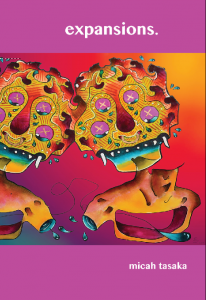 In this presentation, we will discuss how to build international writing communities, utilize internet resources, and create publishing opportunities for one another. Ultimately, we want to explore the connective power of writing communities in our home countries and abroad while focusing on creating mutual support and legitimacy for other writers.
In this presentation, we will discuss how to build international writing communities, utilize internet resources, and create publishing opportunities for one another. Ultimately, we want to explore the connective power of writing communities in our home countries and abroad while focusing on creating mutual support and legitimacy for other writers.
While publishing is often thought of as written work being “accepted” by a publisher, we would like to question what publishing means and focus on how to build international communities that support and create opportunities for one another. Through this discussion, we seek to dismantle the scarcity complex that often surrounds publishing and find new ways to get our work in front of audiences by means of collaboration and community support while utilizing internet resources to extend our reach to a global scale. With backgrounds in both written and performance art, we would like to redefine publishing to be more inclusive and community based. By establishing communities that are willing to hear and experience one another’s work, can we create space for more writers to be legitimized? In doing so, how can we ensure that those who exist in the margins are also heard from and not just established writers?
Micah Tasaka is a queer mixed Japanese poet and spoken word artist from the Inland Empire, California, residing in Fukui prefecture, Japan. They received their undergraduate degree in creative writing from the University of California, Riverside. Micah is a community organizer and has taught workshops on publishing manuscripts, poetry performance skills, and using poetry as healing for trauma survivors. Their first full length manuscript, Expansions, was released on Jamii Publishing in 2017, and their work has appeared in In the Words of Women, Name and None, and Nikkei Uncovered among others.
www.micahtasaka.com
 Yoshika Wason is a teacher and writer. She earned her BA from Boston College, where she was Editor in Chief of ASIAM, an Asian Pacific Islander American literary magazine. She is continuing her work in the API community through her current role as Co President of the Asian Pacific Islander Association for Japan Exchange and Teaching (API AJET.) Yoshika is working on her first full length poetry manuscript currently titled Second Chances for Fallen Blessed Children and also has a self published micro chapbook called Extra Bold. She currently writes a monthly education column
Yoshika Wason is a teacher and writer. She earned her BA from Boston College, where she was Editor in Chief of ASIAM, an Asian Pacific Islander American literary magazine. She is continuing her work in the API community through her current role as Co President of the Asian Pacific Islander Association for Japan Exchange and Teaching (API AJET.) Yoshika is working on her first full length poetry manuscript currently titled Second Chances for Fallen Blessed Children and also has a self published micro chapbook called Extra Bold. She currently writes a monthly education column
called Today’s Lesson and has been published in Ghost City Review, Rice Paper Magazine, The Paper Napkin, and elsewhere. Learn more at
www.yoshikawason.com
Michael Frazier graduated from NYU, where he was the 2017 Poet Commencement Speaker & College Union Poetry Slam Invitational Co-Champion. He has performed at venues such as Lincoln Center for the Performing Arts, Nuyorican Poets Cafe, & Gallatin Arts Festival. His poems appear in The Visual Poetry Project, Day One, The Speakeasy Project, & others. Catch him reading poems for The Adroit Journal & teaching SHS in Kanazawa.
For more information about this year’s Japan Writers Conference, visit www.japanwritersconference.org.
Suzanne Kamata to speak at Japan Writers Conference
Posted by Tom Baker.
JET alum Suzanne Kamata will be among nearly 50 published writers making presentations at this year’s Japan Writers Conference (Oct. 12-13 in Tokyo). Here’s the official description of her talk:
“Wheelchair User or Wheelchair-bound?: Representations of Persons with Disabilities in Children’s Books”
In this session, I will discuss positive and problematic representations of persons with using examples from recently published Japanese textbooks, and literature featuring children in Japan and other countries, including my own work, with a view to developing better awareness. With the approach of the 2020 Tokyo Paralympics, people with disabilities in Japan have been given more attention than perhaps ever before. English textbooks for Japanese children now frequently include stories about or representations of people with disabilities. Worldwide, initiatives such as #weneeddiversebooks and the call for #ownvoices have led to an increase of children’s and young adult books featuring characters with disabilities. That said, some of these representations, and the way that they are discussed remain problematic. When do stories about disability become “inspiration porn”? What kind of language should we use when discussing disability? Who has the right to tell these stories?
Suzanne Kamata is the award-winning author or editor of twelve published books including “Love You to Pieces: Creative Writers on Raising a Child with Special Needs” (Beacon Press, 2008), “Gadget Girl: The Art of Being Invisible” (GemmaMedia, 2013), “A Girls’ Guide to the Islands” (Gemma Open Door, 2017), “Squeaky Wheels: Travels with My Daughter by Train, Plane, Metro, Tuk-tuk and Wheelchair” (Wyatt-Mackenzie Publishing, 2019), and “Indigo Girl” (GemmaMedia, 2019). She is an Associate Professor at Naruto University of Education.
For more details, visit http://www.japanwritersconference.org/
Jennifer Hammer to speak at Japan Writers Conference
Posted by Tom Baker.
 JET alum Jennifer Hammer will be among nearly 50 published writers making presentations at this year’s Japan Writers Conference (Oct. 12-13 in Tokyo). Here’s the official description of her talk:
JET alum Jennifer Hammer will be among nearly 50 published writers making presentations at this year’s Japan Writers Conference (Oct. 12-13 in Tokyo). Here’s the official description of her talk:
“NaNoWriMo: What Are These Syllables and Why Do Writers Care?”
This lecture will focus on what exactly NaNoWriMo is, the pros and cons of writing 50,000 words in thirty days, and how writers can benefit from this online (and real life) community during the official November event, in April and July for “Camp NaNo,” and with writers of varying levels from around the world. Why should a writer care about these four syllables? Because NaNo is a great resource for writers, can be adapted to schools (and/or clubs), and is a way to make friends for life (as well as connect with the 5AM writing club, whichever time zone you’re in).
Jennifer Hammer is the Tokyo Municipal Leader (ML) for NaNoWriMo and a four-year NaNo winner. She writes whatever pretty idea catches her attention, all the way from super hero romance (White Knight) to creepy-crawly horror (JA Hammer) to fantasy video games (Coffee Quills).
For more details, visit http://www.japanwritersconference.org/
Todd Jay Leonard to speak at Japan Writers Conference
Posted by Tom Baker.
JET alum Todd Jay Leonard will be among nearly 50 published writers making presentations at this year’s Japan Writers Conference (Oct. 12-13 in Tokyo). Here’s the official description of his talk:
“Publishing in the EFL Market in Japan: Four Perspectives on How to Make your Proposal Count”
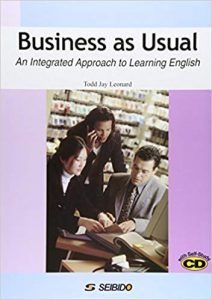 Short lecture with Q & A
Short lecture with Q & A
This presentation will outline the current publishing market in Japan for EFL/ESL textbooks by reviewing the various points of views of the publishing industry. The presenter has published extensively within the ESL/EFL field in Japan and will offer helpful advice to budding authors who wish to pursue projects geared to Japan’s domestic market. What are publishers looking for in the current market? What appeals to editors who ultimately decide? What are the salespeople on the front lines hearing from their market? What must an author do in order to get his/her book published? This presentation focuses on these very questions.
Todd Jay Leonard has been actively involved in book publishing for thirty years and has published twenty books. He lives, writes, and teaches on the southern island of Kyushu, where he is a university professor at University of Teacher Education Fukuoka. He has published extensively in academic journals, magazines, and newspapers on cross-cultural, historical, and Teaching English as a Foreign Language (TEFL) themes.
For more details, visit http://www.japanwritersconference.org/
WIT Life #336: June Japanese movie round-up
Interpreter/Translator/Writer Stacy Smith (Kumamoto-ken CIR, 2000-03) presents WIT Life, a periodic series about aspects of Japanese culture such as film, food and language. Stacy starts her day by watching Fujisankei’s newscast in Japanese, and here she offers some interesting tidbits and trends along with her own observations.
The weather is getting warmer by the day, and soon we’ll be seeking air-conditioned movie theaters to escape the heat. Here are some Japan-related films in June that you might want to check out to stay cool and entertained! 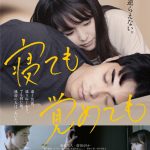
Earlier this month I enjoyed Metrograph’s Ryusuke Hamaguchi series. I was able to finally catch Asako I & II (寝ても覚めても), after having the chance to interpret for Hamaguchi several years ago when his epic Happy Hour (ハッピーアワー) came to MoMA. This month the theater will feature Kon Ichikawa’s Alone Across the Pacific, based on the eponymous non-fiction book about the first successful transpacific solo sea voyage from Nishinomiya, Japan to San Francisco, California.
If short films are more your thing, don’t miss Asia Society’s New York Japan CineFest next week. This two-night program features a diverse lineup of shorts, as well as Read More
2019 Japan Writers Conference wants you!
Posted by Tom Baker
The 13th annual Japan Writer’s Conference will be held on the weekend of Oct. 12-13 at Meiji Gakuin University in Tokyo. The organizers are now seeking writers to give presentations. If you would like to participate, contact details appear at the bottom of this post.
Each year, the Japan Writers Conference attracts English-language writers in a variety of genres and fields to share ideas on the art, craft and business of writing. And each year, a significant number of past and present JETs take part.
At last year’s conference, for example, Holly Thompson spoke about the picture-book market, Suzanne Kamata introduced “The Best Asian Short Stories” anthology, and Tom Baker gave a nuts-and-bolts talk on book reviewing. JET presenters in previous years have included journalist Elaine Lies, textbook author Todd Jay Leonard, travel writer Victoria Vlisides, and novelists Benjamin Martin and Percival Constantine.
Run entirely by volunteers, the Japan Writers Conference is a free event open to all. Details on this year’s event can be found at japanwritersconference.org.
 Writers interested in making a presentation at the 2019 conference should first read the “Call for Proposals” and then contact co-coordinators John Gribble at gribblej@gol.com and Karen McGee at karenandcheyenne@hotmail.com. The deadline for presentation proposals is June 1.
Writers interested in making a presentation at the 2019 conference should first read the “Call for Proposals” and then contact co-coordinators John Gribble at gribblej@gol.com and Karen McGee at karenandcheyenne@hotmail.com. The deadline for presentation proposals is June 1.
WIT Life #334: Hikikomori shifting demographics
Written by professional Writer/Interpreter/Translator Stacy Smith (Kumamoto-ken CIR, 2000-03), WIT Life is a periodic series about aspects of Japanese culture such as film, food and language. Stacy starts her day by watching Fujisankei’s newscast in Japanese, and here she shares some interesting tidbits and trends along with her own observations.
The plight of Japan’s hikikomori (ひきこもり or voluntary shut-ins), has always been a topic that received a lot of buzz, but has primarily focused on young people affected by this phenomenon. However, according to a recent nationwide survey carried out by the Cabinet Office that was the first of its kind, recent trends indicate that it is actually older people who now comprise a larger percentage of Japan’s hikikomori population (gender-wise, men still comprise the majority of ![]()
![]() hikikikomori at a rate of around 3:1).
hikikikomori at a rate of around 3:1).
This BBC article characterized hikikomori as “modern-day hermits,” and describes how this condition is not only limited to Japan, but also seen in other Asian and European countries. In fact, the problem of loneliness and social isolation got so bad in the UK that it appointed its first designated minister for loneliness last year. Here in the States, loneliness has various deleterious effects, which have become Read More
WIT Life #333: King Kazu
Written by professional Writer/Interpreter/Translator Stacy Smith (Kumamoto-ken CIR, 2000-03), WIT Life is a periodic series about aspects of Japanese culture such as film, food and language. Stacy starts her day by watching Fujisankei’s newscast in Japanese, and here she shares some interesting tidbits and trends along with her own observations.
The sports portion of today’s Japanese news showcased the celebration of Kazu Miura’s 52nd birthday. Looking as dapper as ever in a fashionable white suit in front of a huge cake, he shared that every birthday he wore a different color suit (past years have included bright red, yellow and blue), but that he had run out of colors so had to return to white. Perhaps it is this enthusiasm and youthful spirit that enables him to keep pace on the soccer field with professional players decades his junior. Miura (a.k.a. “King Kazu”) began his career in 1986, and he is considered to be Japan’s first soccer superstar.
He was the subject of a NYT profile last year, in which he was described as the epitome of Read More

